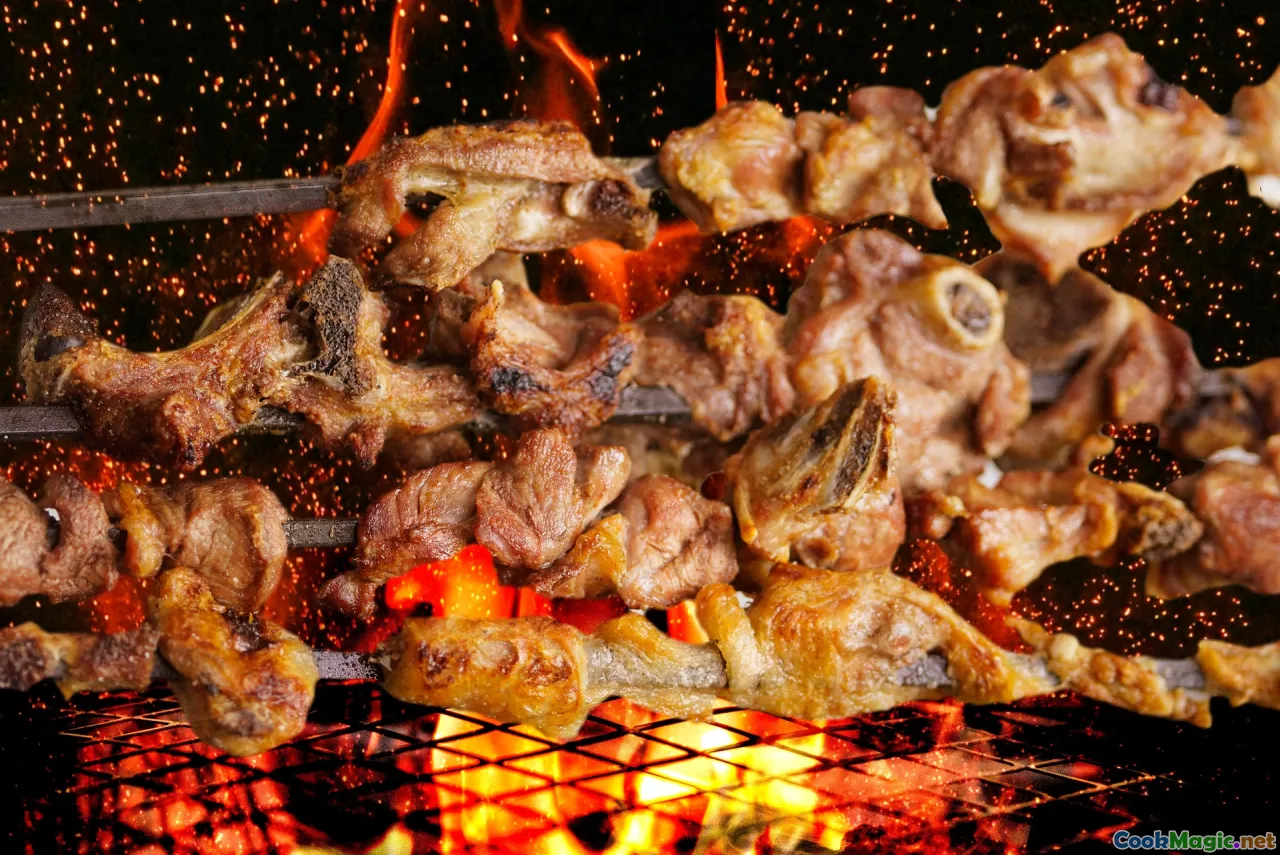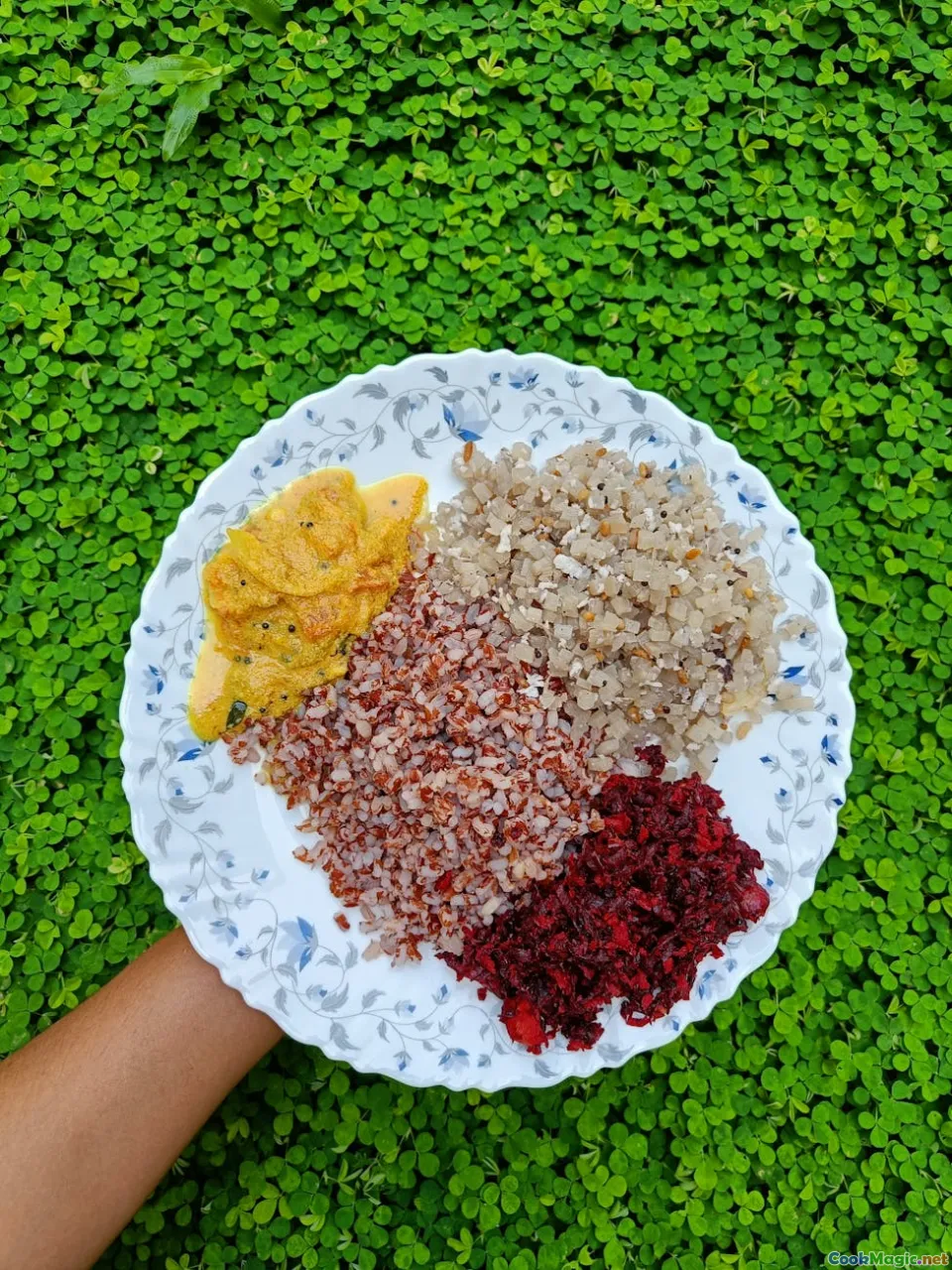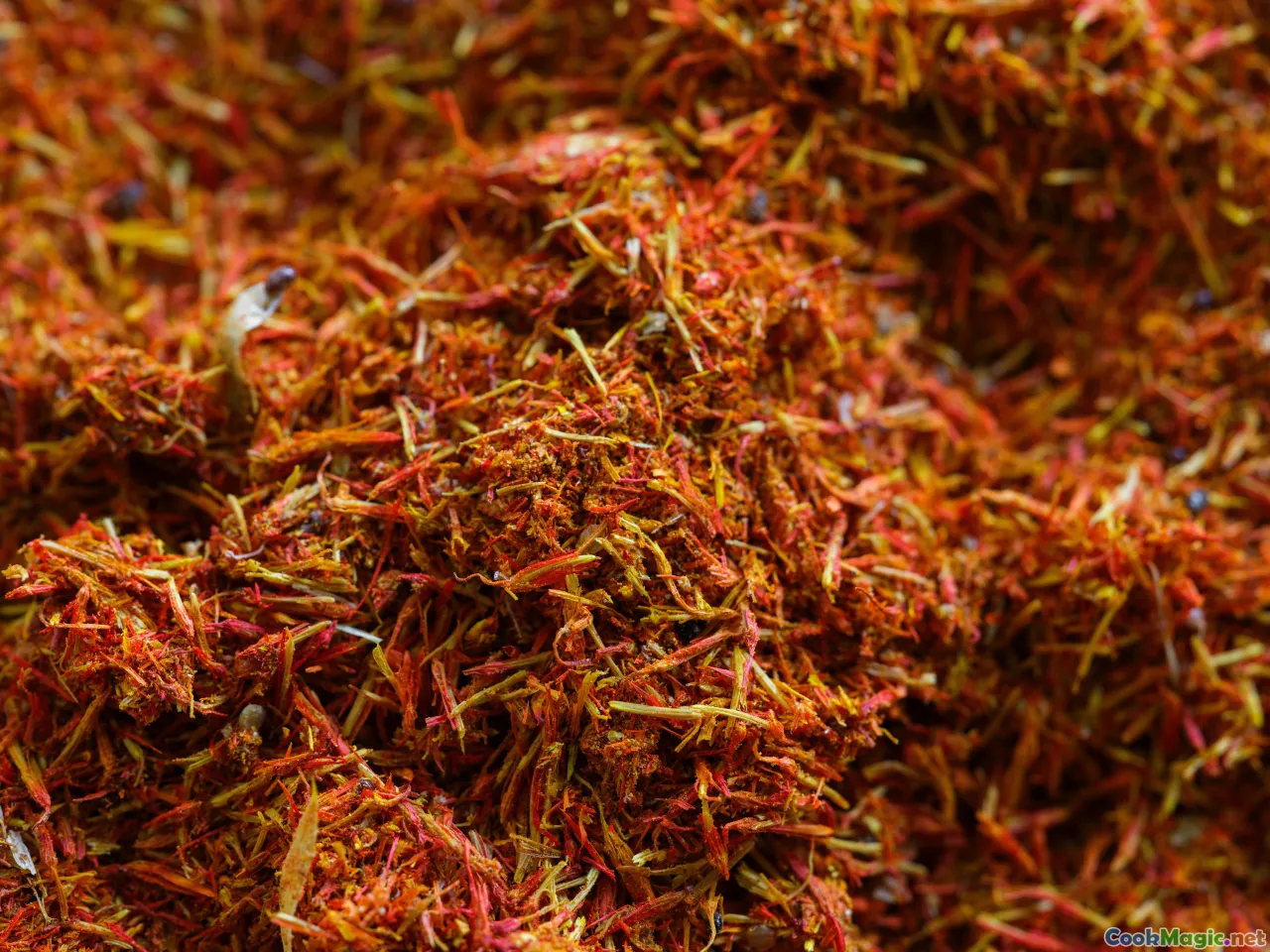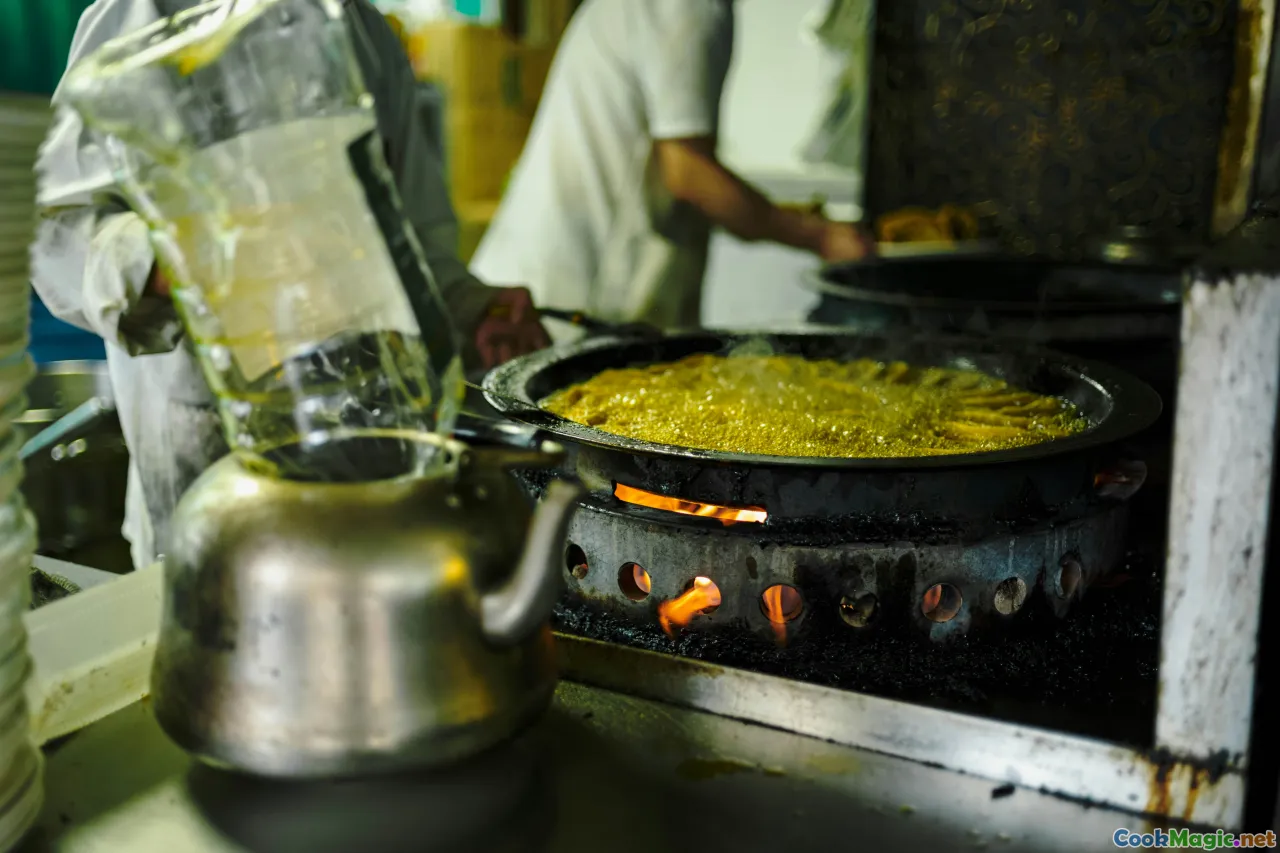Creating Vegetarian Feasts with Pakistani Lentils
12 min read Discover flavorful vegetarian recipes featuring Pakistani lentils, perfect for hearty and cultural feasts. September 25, 2025 09:05
Creating Vegetarian Feasts with Pakistani Lentils
Imagine a bustling street in Lahore, the air thick with the rich aroma of spices blending into the warm sunlit breeze. Spoons of vibrant dals are ladled into terracotta bowls, each spoonful offering a harmony of earthy, smoky, and tangy flavors that stir the soul. Pakistani cuisine has a storied history rooted in centuries of agricultural abundance, cultural diversity, and an innate love for hearty, comforting dishes. Central to this culinary tapestry are the humble lentils—simplicity transformed into a symphony of tastes that can truly elevate any vegetarian feast.
Whether you're a seasoned home chef or an adventurous culinary explorer, delving into Pakistani lentil dishes opens a universe of vegan- and vegetarian-friendly flavors that are both nourishing and soul-satisfying. Let's travel through the vibrant world of Pakistani lentils, uncovering how to create stunning vegetarian feasts that honor tradition, excite the palate, and warm the heart.
The Cultural Significance of Lentils in Pakistani Cuisine

Lentils, or dal in Urdu, have long been a staple across Pakistani households. Their significance transcends sustenance—lentils embody values of simplicity, hospitality, and community. In Pakistani culture, sharing a hearty bowl of dal during communal meals or festivals reinforces social bonds. From rural villages to urban homes, the aroma of freshly cooked dal invokes memories of family gatherings, religious festivities, and the comforting aroma wafting through home kitchens.
Historically, lentils have been cultivated in the fertile plains of Punjab, Sindh, Balochistan, and Khyber Pakhtunkhwa. Each region adds its unique twist—adding local spices, herbs, and cooking methods—creating a rich mosaic of regional flavors. The Persian-influenced Dal Makhani of Punjab, the spicy Daal Chana of Sindh, and the Balochi Lentil Stew all underscore how versatile and deeply ingrained lentils are in Pakistani culinary identity.
Types of Pakistani Lentils and Their Unique Qualities

Understanding the diverse types of lentils is crucial for crafting authentic and flavorful dishes. Here are some of the most celebrated varieties:
Masoor Dal (Red Lentils)
These quick-cooking, bright red lentils are favored for their subtle sweetness and velvety texture. Perfect for making mushy, creamy dals, they cook within 20-30 minutes and absorb spices beautifully.
Toor Dal (Pigeon Peas)
Yellowish and slightly nutty in flavor, toor dal is a backbone of many traditional Pakistani dal recipes. It creates a hearty, thick consistency and is often paired with spinach or bottle gourd.
Moong Dal (Split Green Lentils)
Light and mild, moong dal is easy to digest and lends a gentle flavor. It's frequently used in porridge-like dals or as a component in mixed lentil meals.
Chana Dal (Split Chickpeas)
With a dense, slightly sweet flavor and firm texture, chana dal is perfect for more textured, chunky dals that stand up to longer cooking.
Lentils in Cooking
Creating vegetarian Pakistani feasts involves choosing the right lentil based on the dish's desired texture and flavor profile. Their intrinsic qualities—whether creamy, nutty, or mildly vegetal—shape the dish.
Crafting Classic Pakistani Lentil Dishes

Now that we’ve identified the types, let’s explore some iconic dishes and the secrets behind their creation.
Dal Makhani: The Rich, Creamy Classic
Ingredients:
- Black lentils (urad dal) and kidney beans (rajma)
- Butter, cream, tomatoes, ginger, garlic, spices (ginger, garam masala, red chili)
**Preparation:**Soak urad dal and rajma overnight. In a heavy pot or onion, garlic, and ginger, cook the lentils with spices, allowing their natural flavors to meld. Long, slow simmering turns the lentils creamy and thick. Finish with ghee or butter, a swirl of cream, and a hint of kasuri methi.Sensory profile: Velvety, opulent, with a smoky hint from the slow cooking process. Served with warm naan or steamed rice, it's a feast for the senses.
Daal Chana: Spiced Chickpea & Lentil Blend
Ingredients:
- Chana dal and yellow toor dal
- Authentic spices: cumin, coriander, turmeric, green chilies
**Preparation:**Cook the dals separately then combine. Temper with cumin seeds, add chopped tomatoes, green chilies, and fresh coriander. Simmer until thick and fragrant.Sensory profile: A hearty, boldly spiced dish offering a nutty, savory flavor profile with a hint of heat—ideal alongside achar (pickle) and flatbread.
Moong Dal Khichdi: Comfort in a Bowl
Ingredients:
- Moong dal, rice, turmeric, ginger
- Ghee or mustard oil
**Preparation:**Combine rinsed rice and moong dal, cook with water, spices, and a drizzle of ghee until soft and porridge-like.Sensory profile: Gentle, soothing, with a soft texture and mild flavor—perfect as a light meal or postpartum recovery dish.
Elevating Lentils: Spices, Herbs, and Flavor Layers

The magic of Pakistani lentil dishes lies in the skillful layering of spices and herbs:
- Garam Masala: A fragrant blend of cinnamon, cloves, cardamom, and nutmeg that elevates dal with warmth.
- Tariq Mix: A tempering of cumin, mustard seeds, red chilies, and garlic sautéed in oil or ghee, poured over simmering lentils.
- Fresh Herbs: Cilantro, mint, and green chilies added at the end bring brightness and freshness.
- Acidic Touch: Squeeze of lemon or a splash of vinegar balances richness.
Using traditional spice blends and fresh ingredients not only respects authentic flavors but also personalizes the dish.
Putting It All Together: A Feast of Flavors and Textures

A genuine Pakistani vegetarian feast is a visual and culinary mosaic:
- Multiple little bowls of different dals—creamy dal makhani alongside spicy chana dal.
- Accompaniments like fresh green salads, pickles, and crunchy papadams.
- Warm flatbreads—naan, roti, or bhature—soft and fluffy.
- Aromatic basmati rice, perhaps flavored with saffron or cinnamon.
Serving these dishes family-style, in harmonious balance, invites sharing and connection. The layering of textures—from smooth dals to crunchy pickles—and diverse flavors—from smoky spice to bright herbs—creates an immersive experience that transports you straight to a bustling Pakistani kitchen.
Tips for Perfecting Pakistani Lentil Dishes at Home

- Use Fresh Spices and Herbs: They define authentic flavor profiles.
- Slow Cooking: Patience is key—allow lentils to simmer gently uncovered for depth.
- Quality Ingredients: Prioritize quality lentils and ghee for richness.
- Experiment with Tempering: Don’t shy away from adding garlic, cumin seeds, or dried red chilies during cooking.
- Balance Flavors: Adjust acidity, salt, and spice levels gradually.
- Presentation Matters: Serve with traditional bowls and vibrant garnishes to elevate the dining experience.
Personal Stories and Culinary Heritage
As someone who has traveled extensively through Pakistan, I’ve seen how dal is more than just food—it's a bridge to history, family, and tradition. In narrow lanes of Lahore, elders gather at a communal dhabha, stirring a large pot of Daal Makhani, their faces lit by the flickering glow of oil lamps. Sharing simple lentil dishes has been a gesture of hospitality, a symbol of unity.
I recall a family meal in Sindh, where a generous plate of Daal Chana was accompanied by freshly made chapattis and a tangy mango pickle. That meal was a lesson in how humble ingredients, combined with skill and love, can create a feast that nourishes both body and soul.
A Personal Approach to Creating Your Own Pakistani Lentil Feast
Start small—master a classic dish like Dal Makhani or Chana Dal. Experiment with spice levels, add a twist with regional ingredients like fenugreek leaves or coconut. Embrace the sensory journey: smell your spices as they bloom in hot oil, see the vibrant colors of fresh herbs, taste for balance, and never rush the process.
Over time, you'll develop your own flavor signatures, crafting meals that evoke memories, celebrate tradition, and introduce others to the rich culinary heritage of Pakistan.
In the tapestry of Pakistani cuisine, lentils are an unassuming star—simple yet profound, humble yet regal. Embrace their potential and create vegetarian feasts that are as soulful as they are delicious.









